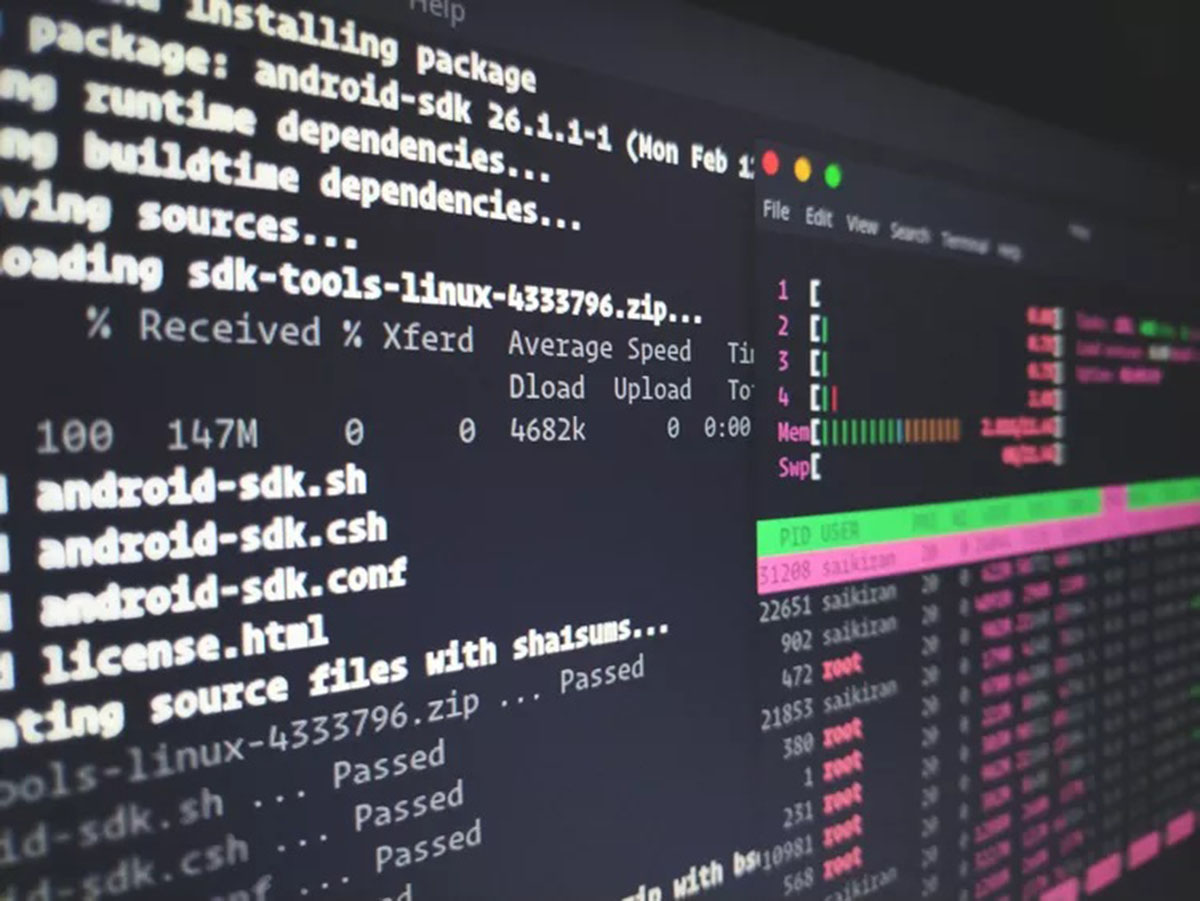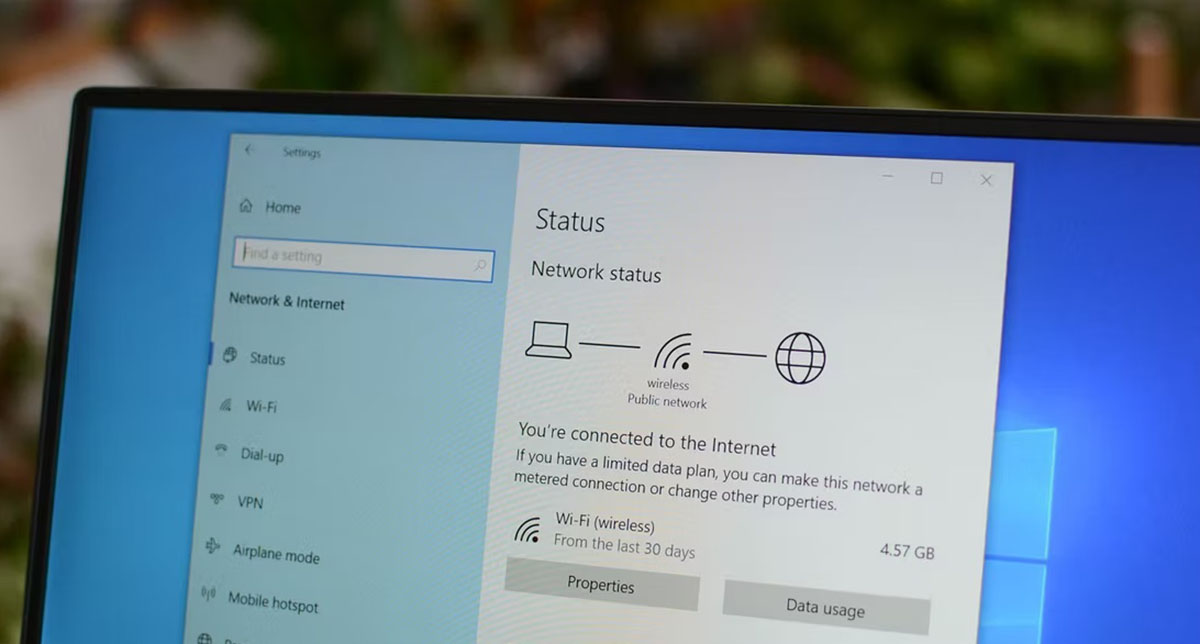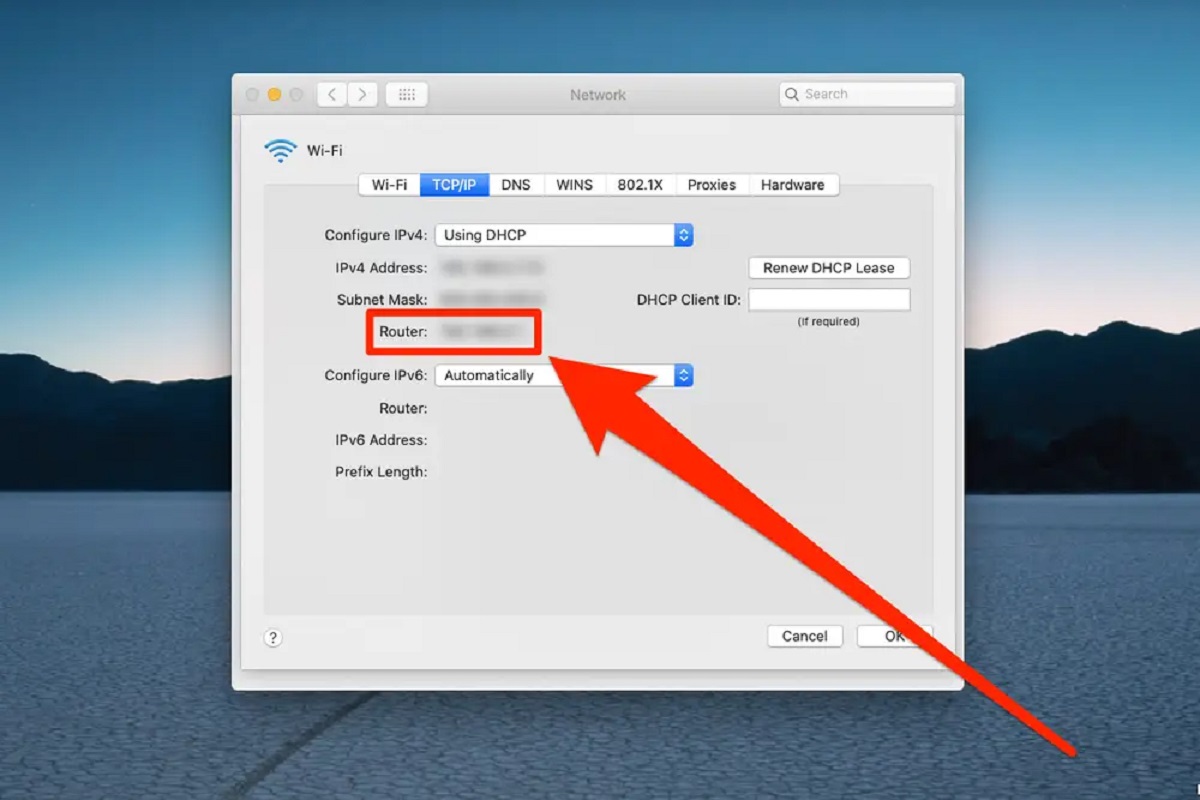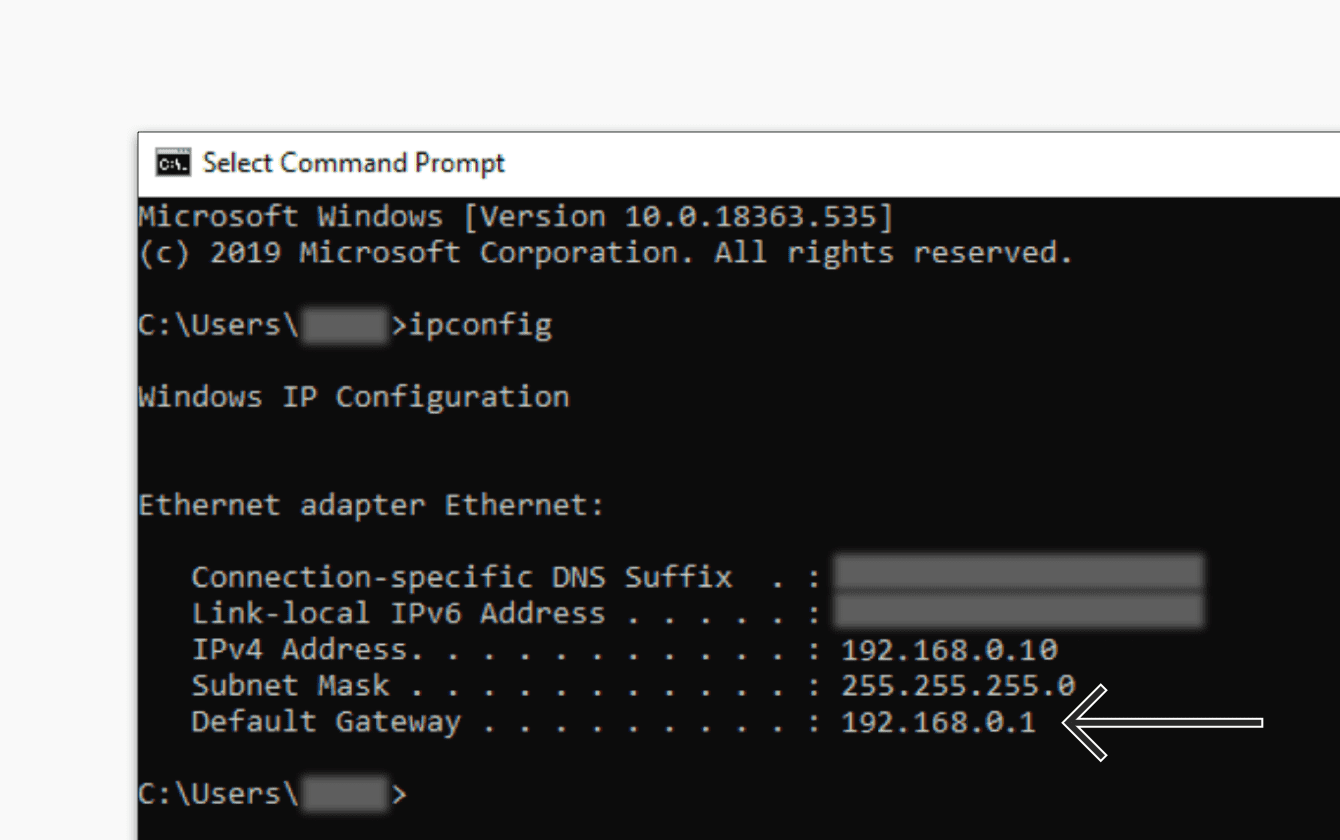Introduction
Changing the IP address in a Linux system is a valuable skill that can come in handy for a variety of reasons. Whether you want to access geographically restricted content, troubleshoot network issues, or boost security, being able to modify your IP address gives you more control over your network connection.
Linux, known for its flexibility and customization options, provides several methods to change the IP address. In this article, we will explore different approaches to altering the IP address in Linux and discuss their advantages and use cases.
From command-line interfaces (CLI) to graphical user interfaces (GUI), Linux offers diverse options to suit different user preferences and skill levels. We will cover methods using the CLI, network manager GUI, configuring static IP addresses, and obtaining dynamic IP addresses through DHCP.
Whether you are a beginner or an experienced Linux user, understanding how to change the IP address will prove invaluable in managing and troubleshooting your network connections. So let’s dive in and discover the various methods to change the IP address in Linux!
Why Change IP Address in Linux?
There are several compelling reasons why you might want to change your IP address in a Linux system. Let’s explore some of the most common scenarios:
- Access Geographically Restricted Content: Many online platforms and streaming services restrict access to certain regions. By changing your IP address, you can bypass these restrictions and gain access to content that might otherwise be unavailable in your location.
- Enhance Online Privacy and Security: Your IP address is a unique identifier that can be used to track your online activities. Changing your IP address can help protect your privacy and make it more difficult for others to trace your online presence and data.
- Troubleshoot Network Issues: Changing the IP address can sometimes resolve network problems, such as connectivity issues or conflicts with other devices on the network. By assigning a new IP address, you can refresh your network connection and potentially resolve any underlying issues.
- Prevent IP Address Blocking: In some cases, you may find yourself blocked from accessing certain websites or services due to your IP address being flagged or banned. Changing your IP address can help circumvent these restrictions and regain access to the blocked content.
- Secure Remote Access: If you need to access your Linux system remotely, changing the IP address can add an extra layer of security. By regularly changing your IP address, you can make it more difficult for unauthorized individuals to gain access to your system.
- Network Testing and Configuration: Changing IP addresses can also be beneficial for network testing and configuration purposes. It allows you to simulate different network setups, test connectivity under various conditions, and ensure that your network infrastructure is functioning as intended.
These are just a few examples of why you might want to change your IP address in Linux. By understanding the reasons behind IP address modifications, you can make informed decisions and leverage this capability to enhance your online experience and network management.
Different Methods to Change IP Address in Linux
Linux offers various methods to change the IP address, providing flexibility and options based on the user’s preference and technical expertise. Let’s explore the different approaches:
-
Method 1: Changing IP Address Using Command Line Interface (CLI)
The CLI is a powerful tool for Linux users to change their IP address. By utilizing commands such as ifconfig and ip, users can easily modify their network settings directly from the terminal. This method is ideal for those who prefer a command-line interface and have knowledge of Linux networking commands.
-
Method 2: Changing IP Address Through Network Manager GUI
Linux distributions that include a graphical user interface often provide a Network Manager tool for managing network settings. Through the Network Manager GUI, users can easily change their IP addresses by selecting the desired network connection, accessing its properties, and modifying the IP address settings. This method is suitable for users who prefer a visual interface and are comfortable navigating through system settings.
-
Method 3: Configuring a Static IP Address in Linux
Another method to change the IP address in Linux is by configuring a static IP address. This involves manually assigning a specific IP address to the network interface. By configuring a static IP address, users can have a consistent and predictable IP address for their system. This is especially useful for servers or devices that require a fixed IP address for networking and remote access purposes.
-
Method 4: Using DHCP to Obtain a Dynamic IP Address
DHCP (Dynamic Host Configuration Protocol) allows Linux systems to automatically obtain IP addresses from a DHCP server. By enabling DHCP, the Linux system will request and receive an IP address dynamically from the DHCP server whenever it connects to the network. This method is convenient for users who prefer automatic IP address assignment and don’t require a specific IP address for their system.
These are the different methods available for changing the IP address in Linux. Each method has its own advantages and use cases, so choose the one that best suits your needs and preferences. Whether you prefer the CLI, the Network Manager GUI, static IP configuration, or dynamic IP assignment through DHCP, Linux provides the flexibility to adapt to different networking requirements.
Method 1: Changing IP Address Using Command Line Interface (CLI)
The Command Line Interface (CLI) is a powerful tool for changing the IP address in Linux using various networking commands. Here’s how you can change the IP address using the CLI:
- Open the terminal on your Linux system. You can usually find the terminal application in the Applications or System Tools menu.
- Type the following command to check the current IP address configuration:
- Identify the network interface you want to modify. Common interfaces include eth0 (Ethernet) or wlan0 (Wi-Fi).
- Use the following command to change the IP address for the desired network interface:
- Verify the changes by running the ifconfig command again. You should see the updated IP address configuration for the specified network interface.
ifconfig
ifconfig [interface-name] [new-IP-address] netmask [netmask]
Replace [interface-name] with the name of the network interface you identified in step 3. Replace [new-IP-address] with the new IP address you want to assign to the interface. Replace [netmask] with the appropriate netmask for your network.
For example, to change the IP address of the eth0 interface to 192.168.1.100 with a netmask of 255.255.255.0, you would use the following command:
ifconfig eth0 192.168.1.100 netmask 255.255.255.0
Changing the IP address using the CLI provides a quick and efficient way to modify network settings in Linux. This method is particularly suitable for users who are comfortable working with the command line and prefer a more direct approach for network configuration.
Remember, the changes made using the CLI are temporary and will be reset after the system is restarted. To make the changes persistent, additional steps such as modifying configuration files may be required.
Now that you know how to change the IP address using the CLI, let’s move on to exploring other methods using the Network Manager GUI, static IP configuration, and DHCP in Linux.
Method 2: Changing IP Address Through Network Manager GUI
Linux distributions often come equipped with a graphical user interface (GUI) that includes a Network Manager tool, providing a user-friendly way to change the IP address. Follow these steps to modify your IP address using the Network Manager GUI:
- Click on the Network Manager icon located on the system tray or taskbar. It is usually represented by an icon with two arrows forming a circle or a computer monitor symbol.
- Select the network connection you want to modify. This could be a wired or wireless connection, depending on your system configuration.
- Right-click on the selected connection and choose “Connection Information” or a similar option from the context menu.
- A Network Manager window will open, displaying detailed information about the selected network connection.
- Click on the “IPv4” or “IPv6” tab, depending on the IP version you want to modify.
- From the drop-down menu, select the desired method for obtaining the IP address: Automatic (DHCP), Manual, or Shared with other computers.
- If you choose the Manual option, you can enter the new IP address, subnet mask, gateway, and DNS servers manually.
- Click “Apply” or “OK” to save the changes.
- Once the changes are saved, the network connection will be updated with the new IP address.
The Network Manager GUI provides an intuitive interface for changing the IP address in Linux. It is especially useful for users who prefer a visual approach or find the command-line interface intimidating. By following these steps, you can easily modify your IP address and related network settings.
Keep in mind that the interface and options may vary slightly depending on the Linux distribution and desktop environment you are using. Nevertheless, the overall process for changing the IP address through the Network Manager GUI remains similar across different Linux systems.
Now that you are familiar with changing the IP address using the Network Manager GUI, let’s explore other methods, including configuring a static IP address and using DHCP to obtain a dynamic IP address in Linux.
Method 3: Configuring a Static IP Address in Linux
Configuring a static IP address in Linux involves manually assigning a specific IP address to your network interface. This can be useful in situations where you need a consistent and predictable IP address for your system, such as for servers or devices that require remote access. Follow these steps to configure a static IP address:
- Open the terminal application on your Linux system.
- Run the following command to open the network configuration file in a text editor:
- Locate the line that corresponds to the network interface you want to configure and modify. The line might look like “iface eth0 inet dhcp” or “iface ens33 inet dhcp” depending on your system configuration.
- Change the line to the following format to configure a static IP address:
- Save the changes and exit the text editor.
- Restart the networking service to apply the new static IP configuration. You can do this by running the following command:
- Verify the changes by running the ifconfig command or using the Network Manager GUI. The network interface should now be assigned the static IP address you configured.
sudo nano /etc/network/interfaces
Note: The above command assumes you are using a Debian-based distribution. For other distributions, the network configuration file may be located elsewhere or have a different name.
iface [interface-name] inet static
address [desired-IP-address]
netmask [netmask]
gateway [gateway-IP-address]
Replace [interface-name] with the name of the network interface you want to configure. Replace [desired-IP-address], [netmask], and [gateway-IP-address] with your desired IP address, netmask, and gateway IP address respectively.
For example, if you want to configure a static IP address for the eth0 interface with an IP address of 192.168.0.100, a netmask of 255.255.255.0, and a gateway of 192.168.0.1, the modified lines would look like this:
iface eth0 inet static
address 192.168.0.100
netmask 255.255.255.0
gateway 192.168.0.1
sudo systemctl restart networking
By following these steps, you can easily configure a static IP address in Linux. This method ensures that your system always uses the same IP address, which is particularly useful for devices that require a stable and predictable network configuration.
Remember to adjust the network configuration file and interface name according to your Linux distribution and network setup.
Now that you understand how to configure a static IP address, let’s explore the final method: using DHCP to obtain a dynamic IP address in Linux.
Method 4: Using DHCP to Obtain a Dynamic IP Address
DHCP (Dynamic Host Configuration Protocol) allows Linux systems to automatically obtain IP addresses from a DHCP server. This method is suitable for users who prefer automatic IP address assignment and don’t require a specific IP address for their system. Follow these steps to use DHCP to obtain a dynamic IP address:
- Open the network configuration file in a text editor. The location and filename may vary depending on your Linux distribution, but it is commonly found at “/etc/network/interfaces”.
- Locate the line that corresponds to the network interface you want to configure.
- Change the line to the following format to use DHCP:
- Save the changes and exit the text editor.
- Restart the networking service to apply the new configuration. You can do this by running the following command:
- Your Linux system will now use DHCP to obtain a dynamic IP address. The DHCP server on the network will assign an IP address to your system automatically.
- Verify the changes by running the ifconfig command or using the Network Manager GUI. The network interface should now be assigned a dynamic IP address.
iface [interface-name] inet dhcp
Replace [interface-name] with the name of the network interface you want to configure. For example, if you want to use DHCP for the eth0 interface, the modified line would look like this:
iface eth0 inet dhcp
sudo systemctl restart networking
Using DHCP to obtain a dynamic IP address is a straightforward method that allows for automatic IP address assignment. This approach is ideal for users who prefer ease of configuration and don’t require a specific IP address for their system.
Remember to adjust the network configuration file and interface name according to your Linux distribution and network setup.
With this method explored, you now have a comprehensive understanding of different ways to change the IP address in Linux. Whether you prefer using the command-line interface, the Network Manager GUI, configuring a static IP address, or relying on DHCP for dynamic IP assignment, Linux provides the flexibility to adapt to your networking requirements.
Frequently Asked Questions (FAQs)
Here are some frequently asked questions about changing IP addresses in Linux:
- Can I change my IP address without restarting the system?
- Will changing my IP address affect my internet connection?
- Can I assign multiple IP addresses to a single network interface?
- Can I revert back to my original IP address after changing it?
- Are there any security considerations when changing the IP address?
Yes, you can change your IP address without restarting the system. In most cases, modifying the network settings or restarting the networking service will apply the changes immediately without requiring a system reboot.
Changing your IP address may temporarily interrupt your internet connection while the changes take effect. However, once the new IP address is assigned and the network is reconfigured, your internet connection should resume normally.
Yes, you can assign multiple IP addresses to a single network interface in Linux. This is known as IP aliasing or multiple IP address configuration. It allows a single network interface to have multiple IP addresses, each serving different purposes or applications.
Yes, you can revert back to your original IP address by modifying the network configuration settings or restarting the system. Alternatively, if your network uses DHCP to assign IP addresses dynamically, you can simply disconnect and reconnect to the network to obtain your original IP address.
Changing your IP address can provide some level of security by making it more challenging for potential attackers to target your system. However, it is important to remember that changing the IP address alone is not a comprehensive security measure. It is recommended to implement additional security measures, such as using firewalls and keeping your system up-to-date with patches and security fixes.
These are some common questions that arise when it comes to changing IP addresses in Linux. If you have further inquiries or encounter specific issues, it is advisable to consult relevant documentation or seek guidance from the Linux community.
Conclusion
Changing the IP address in Linux is a valuable skill that allows for better control over network connections and can address various needs such as accessing restricted content, troubleshooting network issues, and enhancing security. In this article, we explored different methods to change the IP address in Linux.
We started by discussing the benefits of changing the IP address, including accessing geographically restricted content, enhancing privacy and security, troubleshooting network issues, and more. Understanding these reasons can help users make informed decisions regarding their IP address modifications.
We then explored four different methods to change the IP address in Linux:
- Method 1: Changing IP Address Using Command Line Interface (CLI): This method involves using networking commands in the terminal to modify the IP address directly. It is suitable for users who prefer the command line and have knowledge of Linux networking commands.
- Method 2: Changing IP Address Through Network Manager GUI: This method utilizes the graphical user interface of the Network Manager tool to modify the IP address. It is user-friendly and ideal for those who prefer a visual approach.
- Method 3: Configuring a Static IP Address in Linux: This method involves manually assigning a specific IP address to the network interface. It ensures a consistent and predictable IP address, making it useful for servers and devices that require remote access.
- Method 4: Using DHCP to Obtain a Dynamic IP Address: This method allows the system to automatically obtain an IP address from a DHCP server, making it convenient for users who prefer automatic IP address assignment.
Each method has its own advantages and use cases, providing flexibility for different user preferences and networking requirements.
By mastering these methods, Linux users can effectively manage their network connections and make necessary IP address modifications when needed. Whether you are a beginner or an experienced Linux user, having the ability to change the IP address in Linux is a valuable skill that can enhance your overall network management experience.
Now, armed with this knowledge, you can confidently navigate the Linux environment and make necessary changes to your IP address as required. So go ahead, explore the different methods, and unlock the full potential of your Linux system!

























